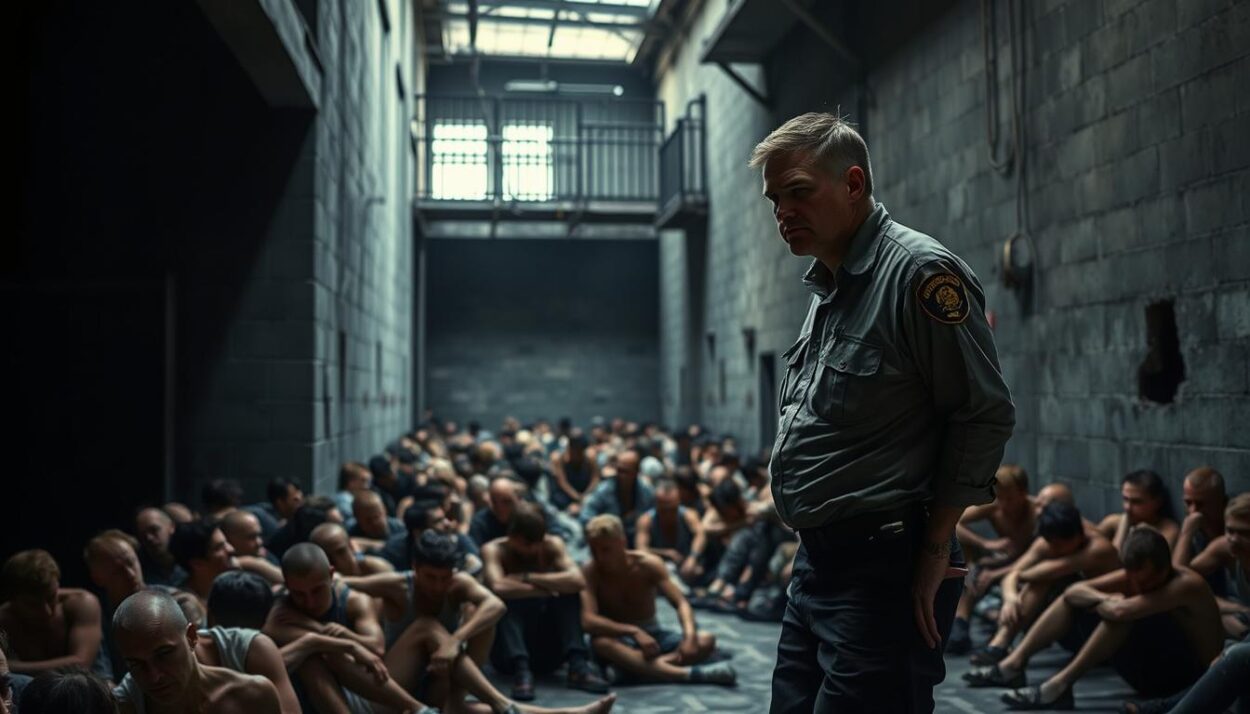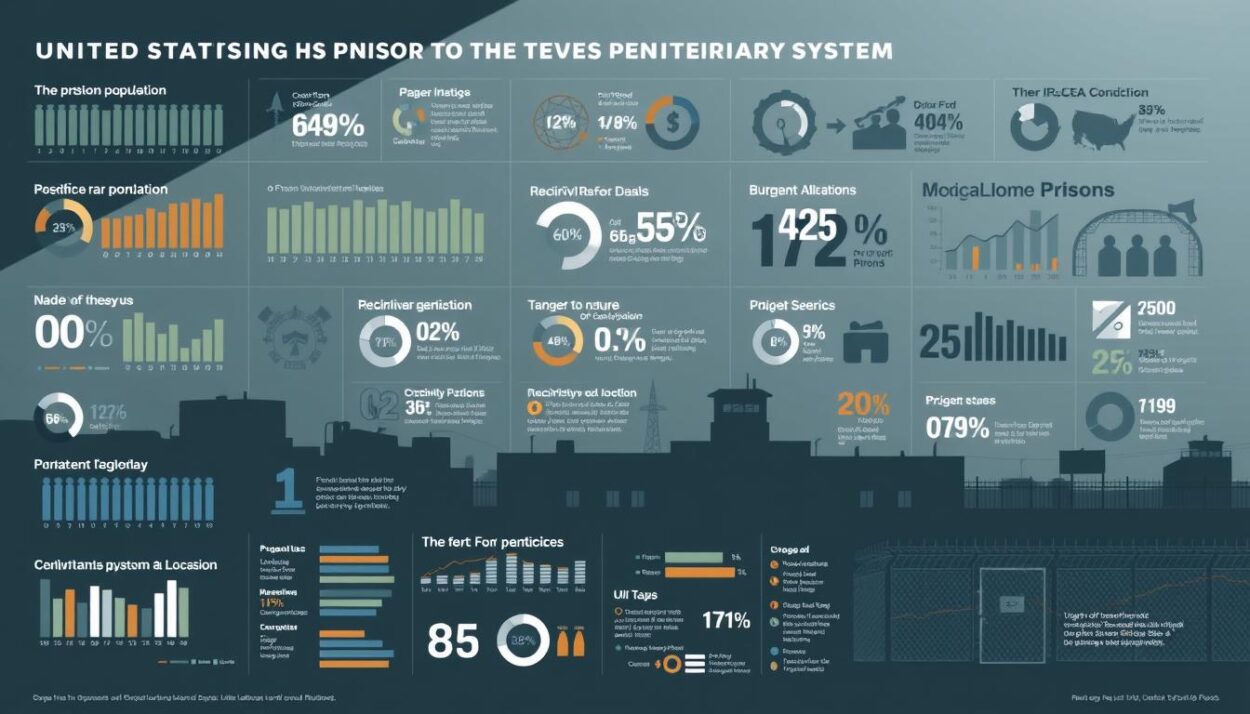Did you know that an estimated 2.3 million individuals are currently incarcerated in the United States, making it the country with the highest incarceration rate in the world? Among these, certain facilities stand out as dangerous correctional institutions, marked by horrific living conditions, violence, and systemic inmate rights violations. This article delves into the 18 worst prisons in the US as of 2025, providing a comprehensive analysis of the deplorable state of these incarceration facilities and the persistent challenges faced by inmates seeking basic dignity and safety within their walls.
From overcrowded cells to inadequate healthcare, the findings highlight a stark reality that cannot be overlooked. This examination will not only detail the specific prisons notorious for their brutality but also the broader implications of such conditions on the American judicial and correctional systems, fostering a deeper understanding of the complexities surrounding prison reform and human rights.
Key Takeaways
- The US has the highest incarceration rate globally, with 2.3 million people in prison.
- Many prisons face severe overcrowding, fueling violence and safety concerns.
- Inmate rights violations are rampant in several dangerous correctional institutions.
- This article explores the harsh realities of 2025’s worst incarceration facilities.
- Understanding these conditions is crucial for discussing prison reform and human rights.
Introduction to the Worst Prisons in America
The worst prisons in America represent a complex issue within the framework of the country’s incarceration overview. These institutions, often viewed primarily as punitive facilities, exhibit characteristics that can exacerbate cycles of violence and recidivism. The public perception of US penitentiaries predominantly emphasizes punishment, while many overlook the severe and at times inhumane conditions faced by inmates.
Conditions within these institutions often lead to detrimental effects on inmates, complicating their chances for rehabilitation. Reports and studies indicate that overcrowding, lack of resources, and insufficient mental health support contribute to an environment where violence and misconduct are all too commonplace. Such circumstances lead to ongoing discussions about the functionality of these facilities and the broader implications for society.
Factors Defining the Worst Prisons
Numerous factors contribute to the classification of prisons as some of the worst in the United States. Overcrowding and understaffing play a significant role in deteriorating prison conditions. Understanding these elements reveals insights into the environment within US penitentiaries and the consequences for both inmates and staff.
Overcrowding and Understaffing
Overcrowding in US penitentiaries has become a pressing issue, with many facilities operating beyond their intended capacities. This situation creates intense living conditions that heighten tensions among inmates. With understaffing prevalent in numerous institutions, the responsibility of managing overcrowded populations falls disproportionately on the remaining staff. Reports indicate that chronic understaffing intensifies the risks for both inmates and correctional officers, contributing to anxiety and violence.
Violence and Inmate Misconduct
Violence in prisons often stems from overcrowding and a lack of adequate supervision. Inmates may resort to aggressive behaviors due to stress, competition for resources, and poor living conditions. These factors encourage misconduct among the population, further destabilizing an already troubled environment. The repercussions of this violence extend to staff, who face increased danger in their daily roles.
Poor Inmate Living Conditions
Poor living conditions in overcrowded facilities lead to multiple problems, from inadequate sanitation to limited access to healthcare. In many US penitentiaries, basic necessities are compromised, negatively affecting the overall health of inmates. Such environments not only hinder rehabilitation efforts but also contribute to high recidivism rates. Ensuring humane conditions remains an ongoing challenge for the correctional system.

Key Statistics on US Penitentiaries
The current state of US penitentiaries reveals stark realities within the prison system. As of recent reports, the total number of incarcerated individuals approaches 2 million, illustrating significant challenges in managing such a large population. This figure is critical for understanding US penitentiaries statistics, particularly when comparing capacity to actual inmate numbers.
Inconsistencies in conditions across different facilities contribute to a troubling prison system overview. For instance, some states experience overwhelming overcrowding, with facilities often operating at double their intended capacity. Contrastingly, certain regions have reported declines in their incarceration rates, prompting discussions on reform and alternative justice measures.
Noteworthy trends indicate that the incarceration rates have begun to stabilize or even decrease in specific demographics. This data presents an evolving landscape, as states reassess their approaches to rehabilitation versus punishment. Understanding these statistics is essential to grasp the systemic issues and various factors influencing the US prison environment.

18 Worst Prisons in the US [2025 Edition]
The alarming state of prison conditions in the US prompts the examination of numerous facilities, particularly those infamous for their harsh environments. Among the 18 worst prisons in the nation, notable institutions stand out due to their notorious reputations and the severe issues faced by inmates. These facilities illustrate the darker side of the American penal system, often marked by overcrowding, violence, and human rights violations.
Notable Institutions and Their Conditions
San Quentin State Prison in California symbolizes the struggle against overcrowding and gang violence. Built in 1852, this institution has been plagued by serious safety concerns. Reports indicate that gang-related incidents remain a constant threat for the inmates. Poor living conditions exacerbate the challenges faced by those incarcerated here, as access to basic necessities is often limited.
Another facility of concern is the Penitentiary of New Mexico, known for its violent past and ongoing issues with inmate misconduct. Testimonies from former inmates reveal a climate of fear and intimidation, where violence is a consistent part of daily life. Prison conditions in the US, especially at this facility, reflect systemic failures in management and oversight.
Angola, also referred to as the Louisiana State Penitentiary, is infamous for its brutal labor practices. Historically known as a plantation, Angola reflects a legacy of exploitation and harsh treatment, providing a vivid example of the troubling state of prison labor in the nation. Many inmates claim that the working conditions are akin to slavery, highlighting severe violations of inmate rights.
These notable institutions underscore the urgent need for reform in the American penal system. The serious implications of overcrowding, violence, and inhumane living conditions require attention from stakeholders at every level. Inmates trapped in these environments continue to suffer, raising ethical and legal concerns for society as a whole.
High-Security Jails and Their Impact
High-security jails, particularly supermax facilities, are designed to accommodate the most dangerous inmates in isolated environments. These jails often impose severe restrictions, including solitary confinement for up to 23 hours a day. This form of incarceration can have profound negative consequences on mental health, raising concerns about inmate safety and overall well-being.
Focus on Supermax Facilities
Supermax facilities represent the highest level of incarceration within the prison system. Inmates in these jails face extreme isolation, cutting them off from social interaction and rehabilitation programs. Critics argue that such isolation often exacerbates existing psychological issues rather than addressing them. The stark conditions in supermax facilities can fuel a cycle of violence and instability among inmates.
Consequences of High-Security Incarceration
Research indicates that the strict environments of high-security jails, particularly supermax facilities, can lead to increased rates of mental health disorders among inmates. The lack of social interaction may contribute to feelings of hopelessness and despair. As a result, many inmates struggle with reintegration upon release, raising questions about the long-term effectiveness of such incarceration methods. Human rights organizations continue to advocate for reforms that ensure inmate safety while addressing the psychological impacts of high-security imprisonment.
Inmate Rights Violations and Reform Calls
The issue of inmate rights violations within the American prison system reveals significant challenges, compelling activists and policymakers to address systemic failures. Numerous prison abuse cases highlight gross misuse of authority and neglect, drawing attention to the urgent need for reform initiatives aimed at ensuring humane treatment of incarcerated individuals.
Noteworthy Cases of Abuse
Several high-profile prison abuse cases have surfaced, demonstrating alarming trends in inmate treatment. Reports indicate instances of physical violence against inmates, inadequate medical care, and inadequate psychological support. Each case exemplifies severe breaches of inmates’ rights, prompting widespread calls for accountability and systemic change.
Prison Reform Initiatives and Discussions
In response to these abuses, a range of reform initiatives has emerged, targeting various aspects of the penal system. Advocacy groups are pushing for comprehensive policy changes, including better training for correctional staff, access to mental health services, and increased transparency within prison operations. Such discussions aim to address both the immediate needs of inmates and the long-term implications for the justice system.
Conclusion
The investigation into the 18 worst prisons in the United States reveals alarming insights regarding current prison conditions. The evidence presented throughout this article underscores the dire need for reform, addressing severe overcrowding, violence, and inadequate living environments that plague these facilities. The conclusions on worst prisons not only highlight the immediate human rights concerns but also illustrate the long-term societal repercussions of maintaining such a flawed correctional system.
The impact of poor conditions on inmates extends beyond the prison walls, affecting their reintegration into society and, by extension, public safety and community health. As policymakers and stakeholders consider the reform needs highlighted in this article, a collaborative approach emerges as a vital pathway toward creating a more just and humane correctional framework. The call for action is clear: it is imperative to engage in meaningful discussions and implement comprehensive reforms.
Addressing the systemic issues within these institutions is no longer a matter of choice but an urgent necessity. The public must remain vigilant and advocate for strategies that not only rectify the inadequacies of the current system but also promote rehabilitation, ultimately fostering environments conducive to healing and reintegration.

![18 Worst Prisons in the US [2025 Edition]](https://www.southwestjournal.com/wp-content/uploads/2025/05/18-Worst-Prisons-in-the-US-2025-Edition.jpeg)












